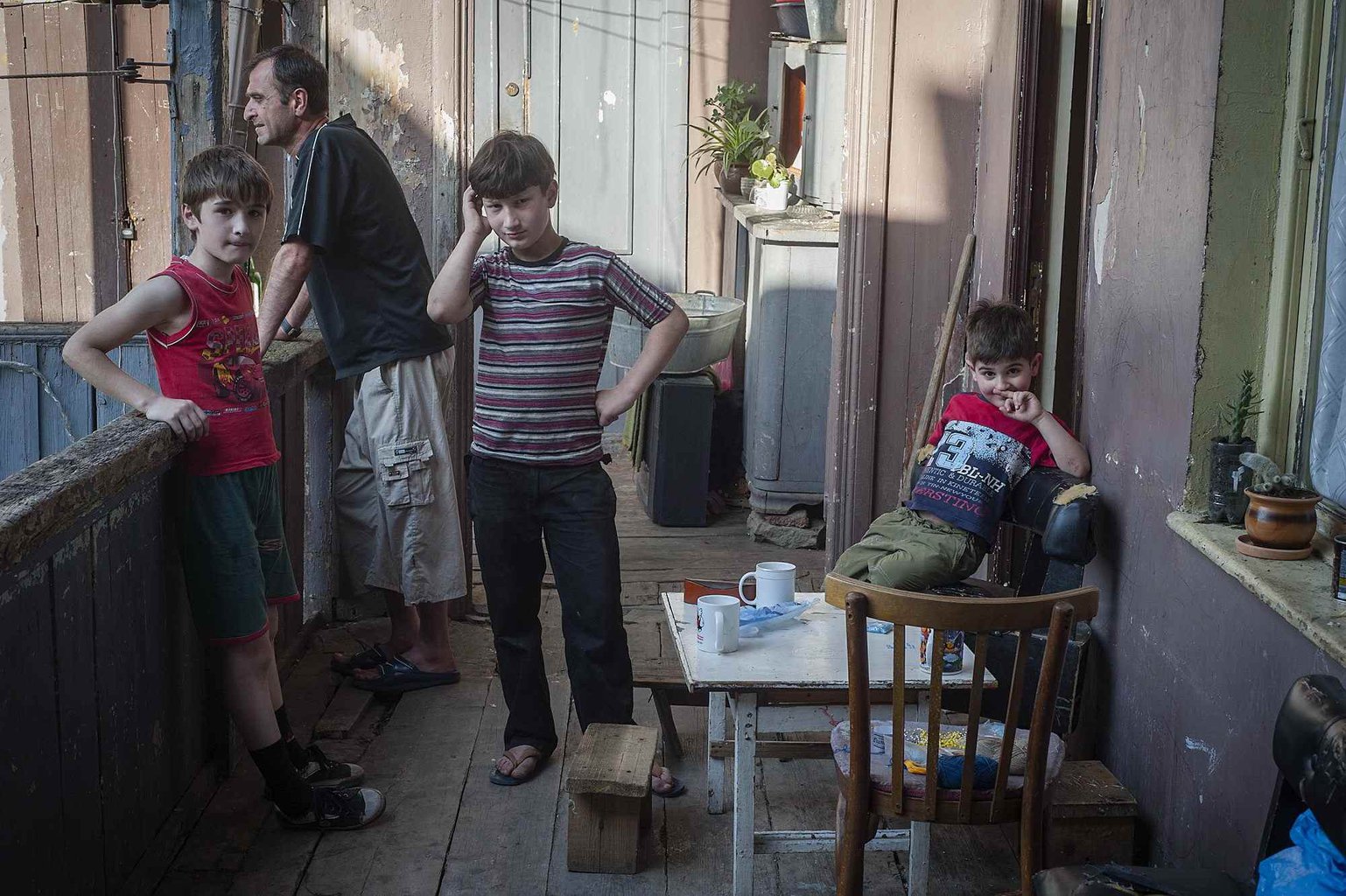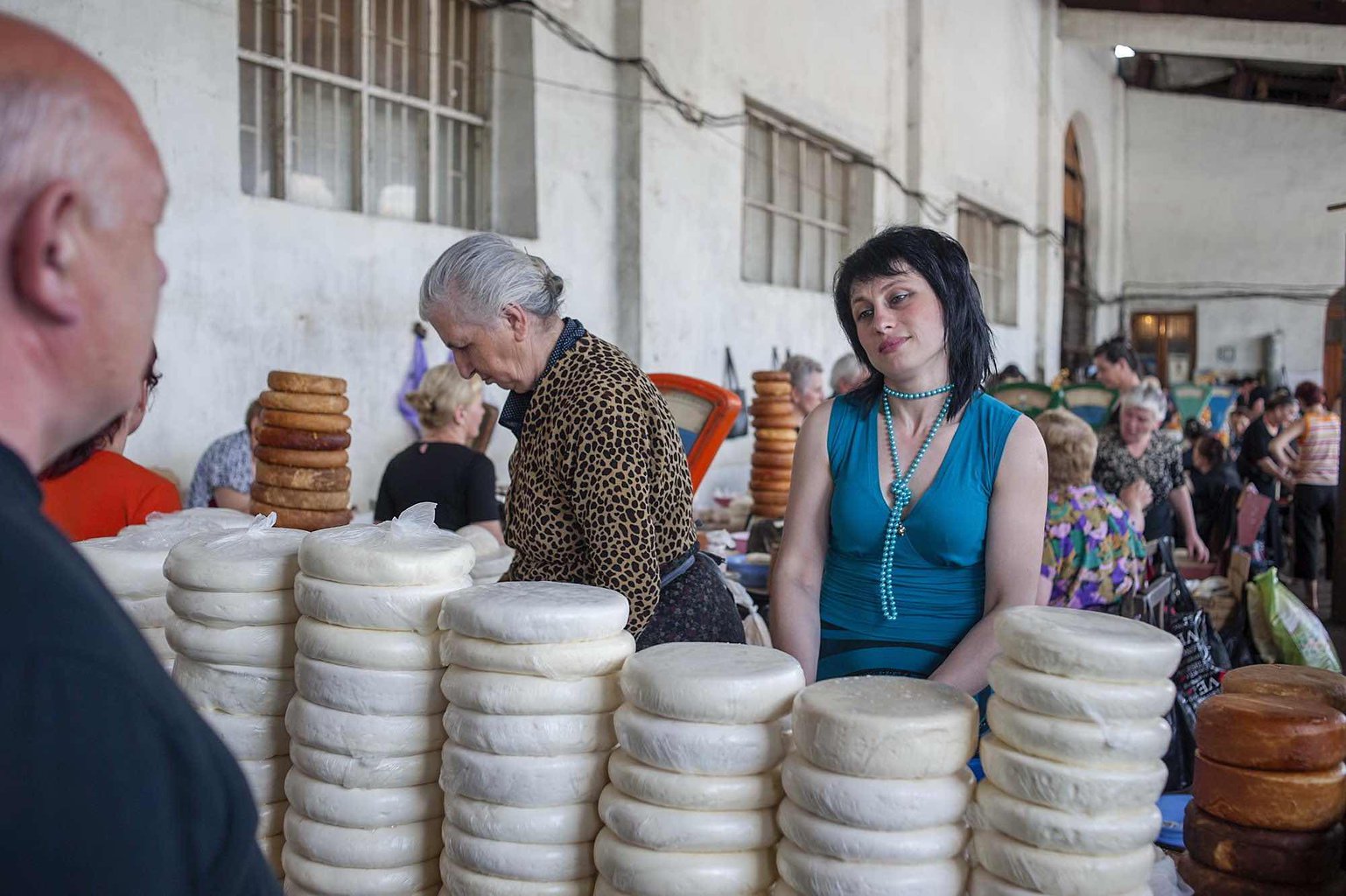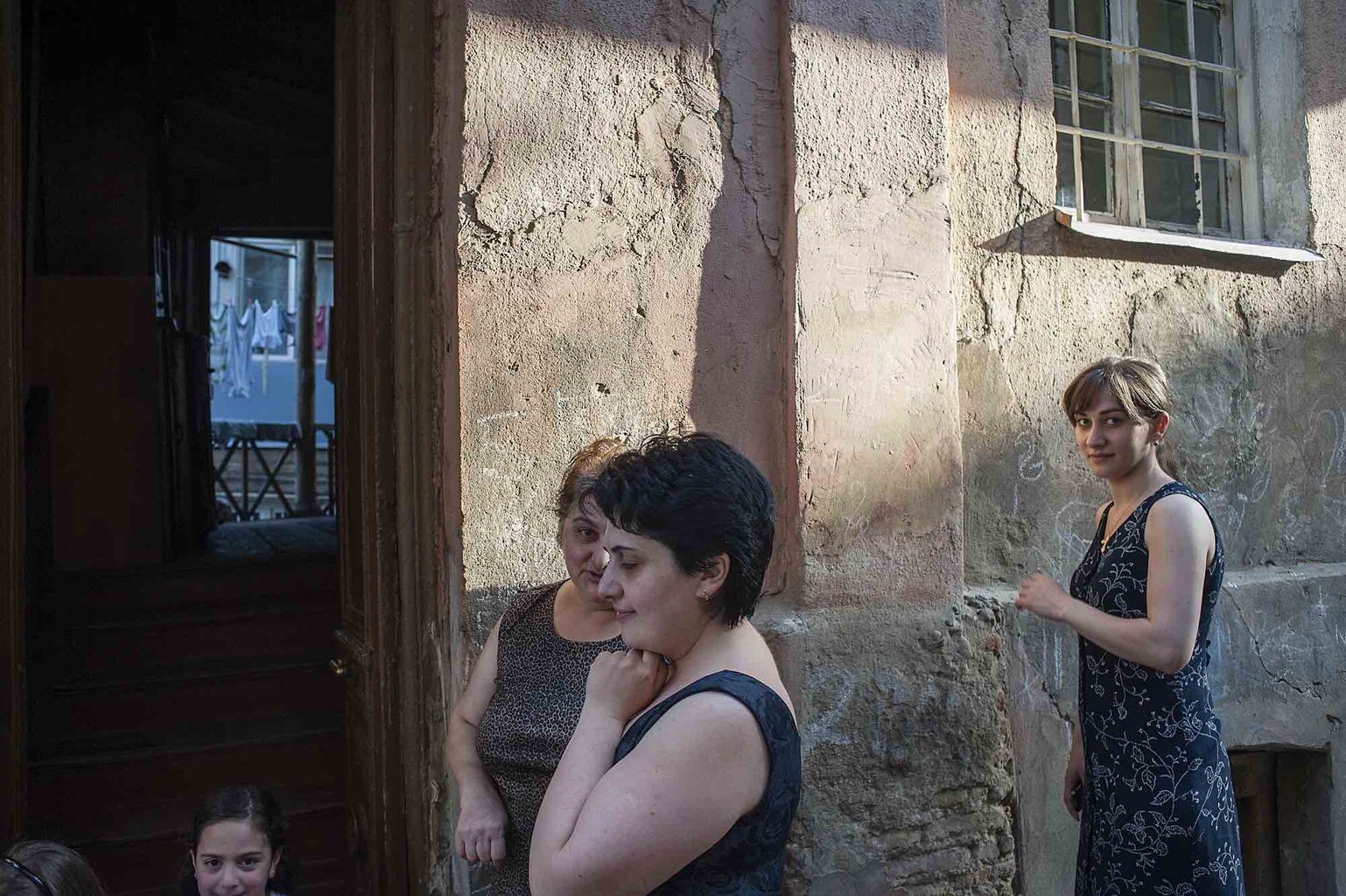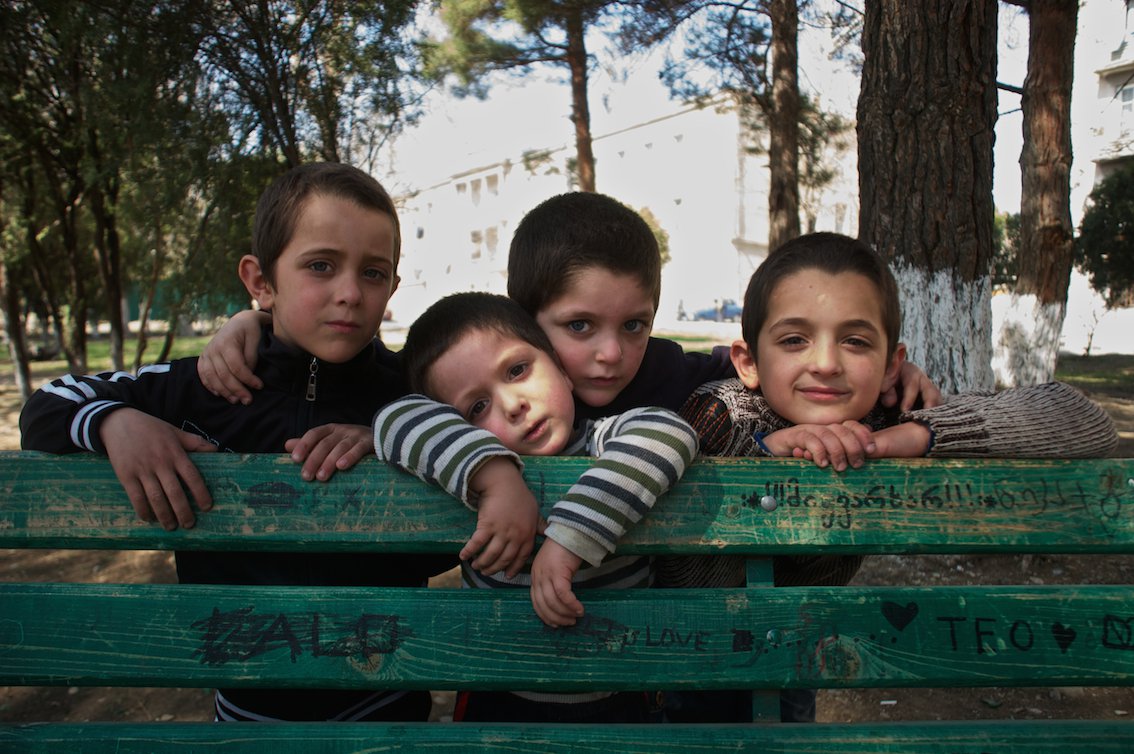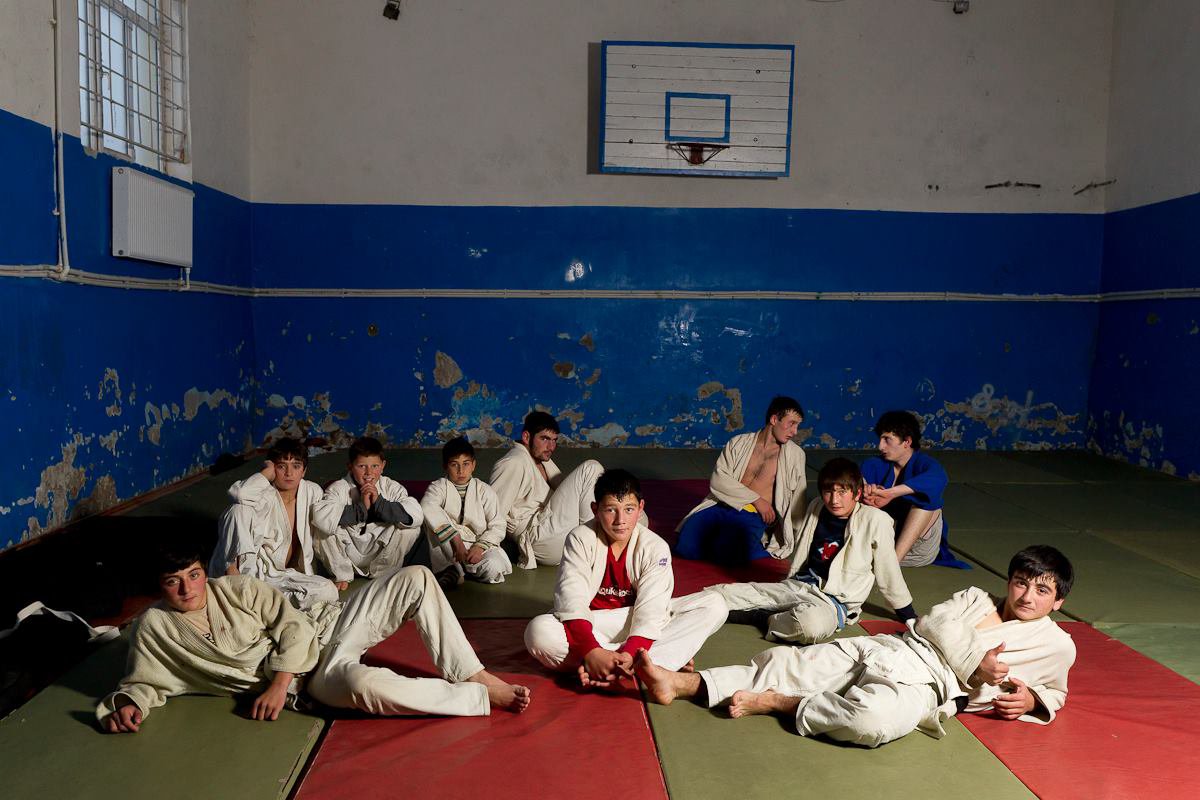Georgia’s blitz of reuniting abandoned children with their families comes at a cost
“There were families who couldn’t even remember they had other children. Or they didn’t know. Some mothers had been lied to while still in the maternity ward, by their families, who had told them their baby had died, because they were too young, or single, or too poor, or the child was ill,” says Eka Seaneblidze, former chief of the country of Georgia’s Department for Social Services.
“But I remember one case – a mother cried with joy when she took her five-year old little girl home.”
Georgia is the first country of the former Soviet bloc to have almost completely shed its USSR child protection heritage in record time.
Following the election of reformist Mikhail Saakashviki in 2003, the country closed down former orphanages and offered the children a family.
But what were the costs of this experiment?
“Every child meant state subsidies”
'Let the little children come to me,' bellowed the Soviet state, which claimed to be more capable of raising children than their parents.
For decades, it swept up children from poor families, those with special needs, children in vulnerable situations and children with health issues. No argument was too insignificant to encourage the natural parents to leave their children in the care of the state.
To the system, each abandoned child meant state subsidies for the institutions. Before the reform, the greater the number of children in an institution’s care, the higher its budget. By cramming children together in giant buildings, the money for raising them was put in the hands of a single person: the director of the institution. And he helped ensure this subsidy could enrich his local community.
“Let’s take the example of an institution for children with tuberculosis, in a remote mountain village. The entire local economy depended on the existence of that institution,” says Andro Dadiani, a reformer in child protection in Georgia for organisation EveryChild Georgia.
“The aberration of the system went so deep that the hospital for children with TB was nothing but a disguise for a state-funded foster care centre. Many children were perfectly healthy and had simply been abandoned there.”
The plan: a dictatorship of meritocracy
In November 2003, revolutionary forces led by Saakashvili, a 35-year old Liberal supported by the US, entered the Parliament holding roses and asked for the resignation of President Eduard Shevardnadze - the leader of a corrupt regime.
After being democratically elected in January 2004, Saakashvili imposed a “dictatorship of meritocracy”, where the only way to hold public office was by ability.
In the first few months, he cleansed the government and administrative structures and appointed to important positions young people with excellent qualifications and western leanings.
All the Ministers were given free rein to form their teams. Overnight, the Soviet buildings – with leather-upholstered doors, endless marble corridors, garish candelabra and heavy wood furniture – were teeming with youngsters dressed in jeans and brandishing laptops, many of whom were former Soros Fellows in the United States.
They created labs for government strategies and established the steps of liberal reforms. The experiment became a textbook example of one of the fastest and most radical reforms in history.
“We didn’t have paper to write on”
Dadiani remembers the euphoria at workgroups at the Ministry, which brought together NGO members and representatives of public institutions.
“We all sat around a big meeting table in a huge, cold, empty room,” he says of the time. “A table and chairs, nothing else. We didn’t even have paper to write on.
"That’s where I met Tamta Golubiani. She presided over the meetings. It was impossible to not notice her. When you walked in, everything was grey and austere beyond imagination. She was sitting at one end of the table, looking at a small laptop - surrounded by pink accessories – so pink that you couldn’t look away.”
Golubiani was only 26 years old when she received a call from the new Saakashvili Government. She had just returned from the USA with an MA in Education from a university in New Jersey.
Suddenly she was appointed head of the Child Protection Department, which didn’t even exist.
“They were in the process of creating it,” says the reformer, now working for Save the Children. “I started to work with an educated, persuasive, young Minister, the very opposite of any Georgian politician so far. The plan was to reform the child protection system during the three years the Government would be in power. No one knew what would come after that.”
The think tank at the Ministry of Education laid down the Action Plan for the Children of Georgia. At the time, over 5,000 abandoned children were living in 49 orphanages built and managed on the same Soviet model spread and implemented in all neighbouring countries. The objective was to close down all the orphanages and move the children to environments that would resemble as much as possible a family.
But there was no network of alternative services to pick up the slack, so international organisations such as EveryChild, UNICEF, World Vision, Save the Children and SOS Children’s Villages funded programmes to pioneer alternative solutions for the children who would leave the Soviet orphanages.
All this was happening in real time. Social workers were being trained, foster carers were being identified and taught, day centres were being opened and family-type homes were being built to house a maximum of eight children each.
The action plan had been in place for years, when the only entity in Georgia to put abandoned children on its agenda had been the civil society.
“The NGOs, particularly, had tried to make their voice heard, had come up with solutions and legislative initiatives, but they had hit a political wall,” says Golubani. “What we did was bring together in a coherent plan resources and recipes that were already there.”
“Our plan was a stunning demonstration of how the alternative system would, in fact, work with the same costs, or even less. It wasn’t true. In its first stage, the alternative system was twice as expensive. I believe that, if it's for the good of children, you can use any kind of budget manipulations.”
Family housing: supported by Americans
The reform of child protection in Georgia was ready to be rolled out. But then it came up against a tough opponent for time and energy. War. Georgia against Russia in August 2008 over the region of Southern Ossetia. This would not end well for Georgia.
The fighting only lasted six days, but the preparation swallowed up a great part of Georgia’s budget for several years.
It wasn’t until 2009 that the issue of abandoned children returned in force to Georgia’s public agenda. And it did so in style, through yet another political gesture unprecedented in the history of neighbouring states. When the American agency for international development USAID contacted Georgia via diplomatic channels to announce that it would send eight million dollars to renovate orphanages, the Health Minister at the time, Andro Urushadze, refused.
For this stand, many consider him a hero.
Urushadze approached the US Ambassador in Georgia and explained why renovating the orphanages would sound the death knell for reform.
Instead, he asked the Ambassador to pass on the message that the money would help children if it was used to build family-type housing. The Americans agreed and, for the second time, the child protection reform was ready to be rolled out - with US money.
Urushadze wanted to de-centralise the system.
“If one orphanage decided it wanted to buy ice cream for its children, it had to file an official request with the Ministry and, if it was approved, all the children in ALL the orphanages in Georgia would get exactly the same ice cream,” says Urushadze.
“It was much easier that way, from an accounting point of view. Everything on one bill. Same for the shoes. They decided on a model and colour and all, absolutely all the 5,180 children in the care system would get the same pair of boots that autumn.”
Families “paid” to take children back
The state would give financial support to families who wished to take their children back home. Alternative services were to be outsourced to experienced NGOs – this meant training social workers and foster carers.
For the children who would neither return home nor placed in foster care, the state would build family-type housing.
To prevent abandonment, a programme would create an emergency fund for families in need. Also, for the children’s future, two programmes were implemented: one to bring together private donors for the children’s education, and another to manage a savings account for each child in the system, fed by the state each month until they turned eighteen and had to leave the care system.
In fewer than four years, 23 orphanages were closed. Almost 40 per cent of the children returned to their natural families, and 1,320 moved to foster care. 40 family-type homes were built, to house 314 children. Almost 100 new social workers appeared in the system.
But this was a mistake
“I found myself opposing my own reforms”
“What happened was completely wrong,” says Dadiani. “For years I had fought like a madman for the reform, the organisation I led [EveryChild Georgia] had trained almost all the social workers and foster carers in the system, and suddenly I found myself vehemently opposing it. You can’t close orphanages overnight! The children are not prepared! The parents are not prepared! People in the Ministry called biological parents day and night and practically threatened them to get them to come pick up their children. Sure, the results are impressive. But at what cost?”
This scheme was too rushed. But was there any other choice?
“The reform only stood a chance if the plan took off in full force," argues former minister Urushadze. "It was the only way. And we did it, though there are many voices who cricitize the way it was done."
Now no one monitors children who have been reintegrated into their biological families - many of whom did not want to correspond with the children for years.
“You want to know what I feel when I think back to those years? Disappointment and guilt," remembers Marina Shaghasvili, who led the monitoring team of the Department for Social Services, and is now the director of SOS Children’s Villages in Georgia.
"It’s like they weren’t even children, we moved them from one graph to the next so the numbers would work out. We had no time to prepare them for what would happen."
Reforms: great on paper, not in real life
A policy of closing down orphanages is a pre-requisite the EU imposes on potential candidate countries for the bloc. Romania suffered most from the blight of abandoned children in the 1980s due to the dictator Ceausescu’s policy against contraception and abortion - and closing institutions was one of the conditions for joining the Union.
For Georgia, other financial constraints brought the issue of abandoned children onto the political agenda.
Thus, in 1998, the European Commission changed the conditions for a 20 million Euro grant as part of the Security Food Support. In the late ’90s, reforms in child protection were a way to access EU grants, a shortcut used by the government to get European money. Except the reforms only took place on paper. They looked good in summaries, but didn’t show in the child’s life.
Shadow child-care system: 'booming'
Officially, Georgia has almost eradicated the institutional child protection system. The only two such centers still in existence are preparing to close.
Unofficially, there is a boom in the grey area of child protection, off the State radar, but covering about 1,200 children in religious institutions - both Christian Orthodox and Muslim. These are unregulated. The state considers that these children need no special protection or monitoring because, on paper, they are back home, with their biological families, who look after them and protect them.
But these aren’t the only institutions still operating. According to the Equal Treatment to the Schools of Faith (2016) by Partnership for Children Georgia, there are orphanages which were declared closed, but are still functioning. They changed their name, administrative structure and amended the source of financing from the state. They have also vanished from the reports on reform.
The most developed social service is foster care, which accounts for 64 per cent of children in the system. The network of carers has grown like a big village, with friends and families helping each other out.
This is seen as the most successful model. Families brought each other in and created support groups. Specialists pushing for this model of child protection involved their relatives, foster care was promoted in kindergartens, and at residents' meetings in apartment blocks.
An informal network grew up of searching for potential parents willing to be paid by the state to raise abandoned children.
Authorities: street children “refugees from Azerbaidjan”
Another layer of children invisible to the authorities are street children. This could be the evidence that the reform has partly failed. On paper, they also do not exist. But everyone can see the streets in the country's capital Tbilisi are populated by a rise in begging children.
However the authorities continue to claim they do not come from former orphanages, because those children have returned to their families. They argue that the kids must be refugees from Azerbaidjan, where begging is punished by law. The only official numbers on street children date back to 2008, when Save the Children and its partners made a study in only four cities and towns in Georgia and counted over 1,500.
In 2010, Maya Mgeliashvili was appointed director of the Centre for Street Children in Tbilisi.
“I used to take children home from the centre if they asked me to. My daughter grew up with them. Nowadays you can’t do that anymore, because of new regulations. I don’t believe in regulating human connections. I only believe in emotional links. They are uncontrollable, you can’t force them, but when they do happen, they’re real.”
Now Maya has stopped working at the centre and is child protection services and advocacy manager for NGO World Vision Georgia. After work, she still visits the children at least two or three times a week. She estimates that there are at least 2,000 children living on the streets of Georgia.
The last remnant of the old system is the Infant House in Tbilisi – a shelter for babies and small children with special needs.
Time has stopped here. There are 58 cramped little beds, with barely enough room to squeeze between them, for the children lost on the way to reform.
“In Georgia, children with special needs have minimal chances at living a normal life,” says American Debbie Dunn who, after retiring, volunteered in Infant House. “I’ve been coming here for two years, working with the children daily, so I’ve started to know them, I know what makes them laugh, what scares them. They’ve started to expect me, they’re happy when I walk through the door. Then, one day, they just disappear.”
Without any prior warning, no time for acclimatisation, the authorities send the children either into foster care, to another institution for children with special needs, or put them up for international adoption.
Debbie has made a point of talking to the children in English as much as possible.
“Their one real chance of getting away from here is to be adopted abroad,” she argues.
“A year ago, I met a little blind girl. I was the first adult in her life who ever thought she might need more from life than just sitting on a carpet. I bring no accusations to the personnel here. They are overwhelmed. They barely have time to cover the children’s primary needs. I didn’t do much, I just went to the school for the blind, and they took her in. She started to go to school every day and she made huge progress. Before long, she was adopted by an American couple. I visited her last summer in the States. She has bloomed.”
Debbie was an abandoned child herself. She lived in the American child protection system, separated from her six siblings. Some of them lived in institutions, others were put in foster care. For years she fought with her memories of the system and she still tries to repress a physical reaction to violence. Even fictional violence in movies can disturb her.
“As a child, I tried it all,” Debbie Dunn says. “In America, I lived both in care institutions and in foster care. As did my brothers and sisters. Some of us would exchange the institution for foster care any time, others would do the very opposite. The experience is so personal… There is no perfect solution for abandoned children.”
Translated from the Romanian by Anca Barbulescu
This article was written with the support of the journalism grant "Sprijinirea jurnaliștilor din România în abordarea subiectelor de dezvoltare internațională" [Supporting Romanian Journalists in Approaching Subjects of International Development], a project implemented by the Federation of Non-Governmental Development Organisations (FOND/NGDO). The project is financed by the Romanian Ministry of External Affairs (MAE) through Romania’s development cooperation programme (RoAid) and put into effect with the support of the United Nations Development Programme (UNDP) in Europe and Central Asia. The content of this material does not necessarily represent the position of the MAE or the UNDP.
This article is part of a series through which I have aimed to make a portrait of the first generation of lobbyists in the region. Advocacy is a field with no recent history in the former Soviet bloc, and those who have been influencing the legislation for child protection during the last two decades are doing this by intuition and verve, and are, most often, motivated by personal experiences.
I would like to give special thanks to Jaba Nachkebia (UNICEF), whose passion for his work is hard to express in words, for having been an extraordinary guide through the Georgian child protection system. For over ten years, Jaba headed Children of Georgia, an NGO active in the country’s child protection, whose president he was for two consecutive mandates.
Follow us
